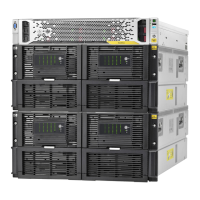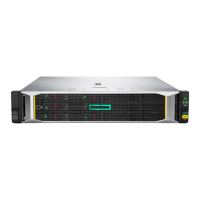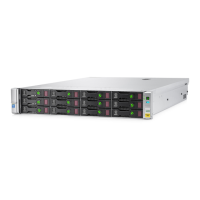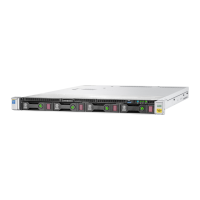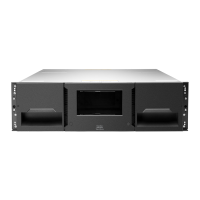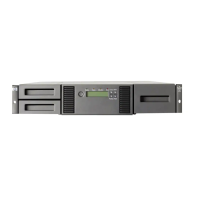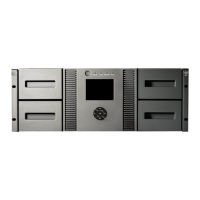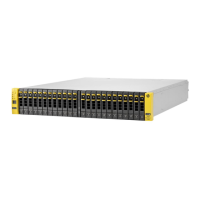Multi-node terminology
The following terminology explains some of the concepts that are particularly relevant to multi-node
implementations.
Node
A node is one of the pair of servers that, together with the array storage, make up a couplet.
The two nodes are directly connected in failover pairs. If one node fails, the other node can still
access the storage from the failed node, because there are storage paths from each node to both
controllers of both arrays.
Couplet
A couplet consists of two server nodes and two 12-disk array controllers, one for each node.
Additional 12-disk storage shelves may be purchased and connected to the couplet (up to three
pairs of storage shelves may be connected to the disk array controllers).
Cluster
The cluster is the overall configuration of servers within the StoreOnce Backup System. It consists
of between one and four couplets installed in B6000 racks. There is a single URL to access the
cluster and the Management Console and all configuration tasks function at cluster level. A fully
expanded cluster consists of two racks with two couplets in each rack.
VIF
The HP B6000 Backup System uses a concept called a Virtual Network Interface (VIF). This makes
use of virtual IP addresses rather than physical IP addresses, which means that if one physical port
fails the system fails over transparently to the other physical port and all functions continue to work
correctly without the user having to make any changes to the IP address configuration.
To summarize, couplets have no single point of failure in hardware, providing and minimizing the
amount of downtime because:
• External ports that are used to connect to the customer's network are bonded (normally in
pairs), which means that each set of bonded ports has the same physical IP address and an
associated VIF that relates to the service set running on that node. Should the physical port
fail, data will be processed on the failover port but no change is needed to the virtual IP
address of the service set, allowing backup and all other functions to run correctly.
• The Management Console (GUI and CLI) also uses a virtual IP address (VIF) to access and
manage the services and storage on the Backup System. This VIF applies across all nodes in
the cluster. At installation a master node is configured, but should that node fail the
Management Console is automatically transferred to another functioning node and can be
accessed by the same VIF.
B6000 Management Console
This is the overall term used to describe the console that provides access to both the StoreOnce
and the Manageability functions. In some instances it refers to tasks that are carried out from the
Web Management Interface or GUI; in others it refers to tasks that are carried out from the CLI.
CLI
This is the Command Line Interface. It allows authorized users to access the Management Console
via SSH. Some tasks can only be carried out from the CLI.
Multi-node systems 7

